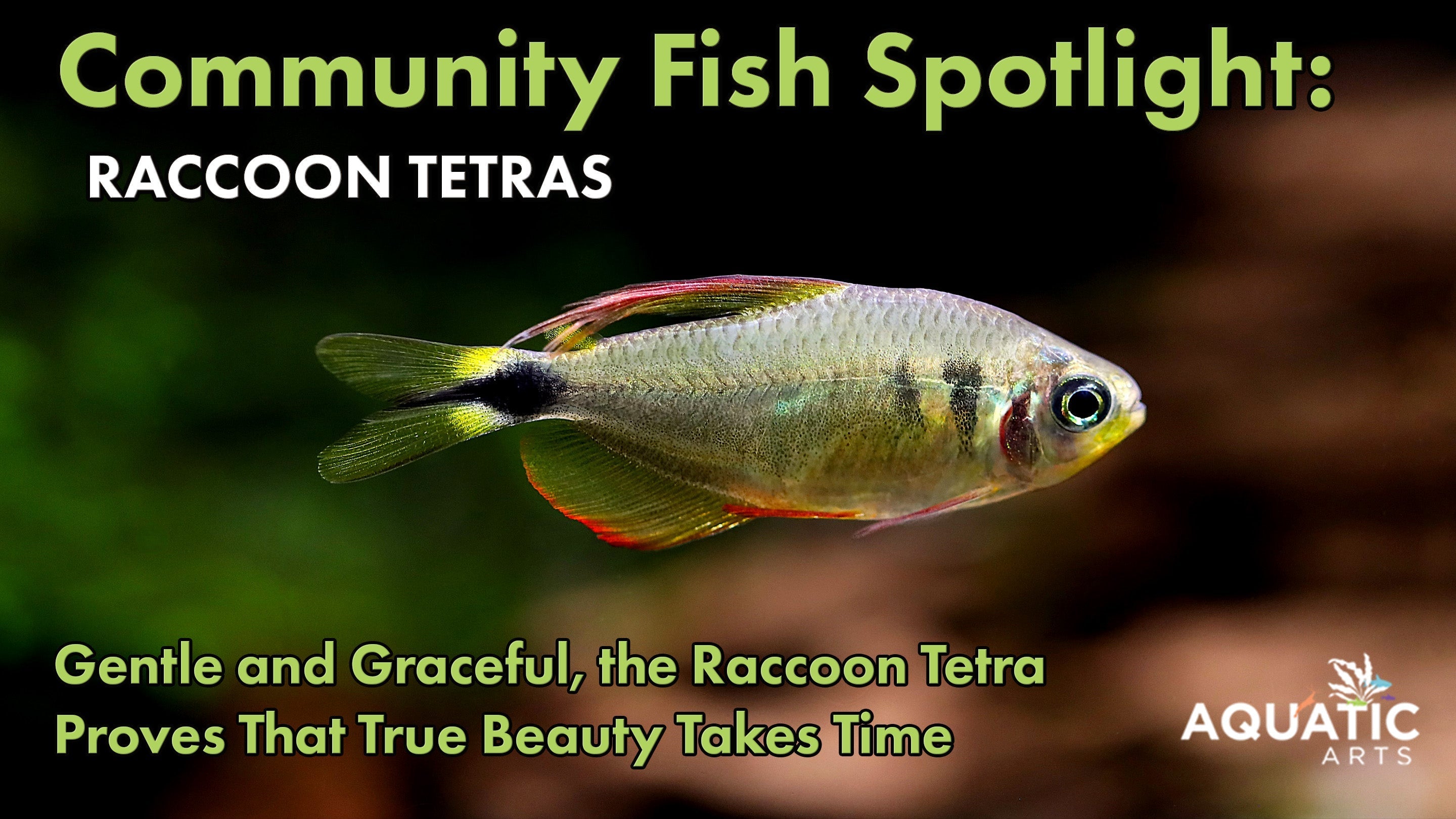Community Fish Spotlight: Dwarf Cuckoo AKA Leopard Catfish (Synodontis petricola), Tank-Bred
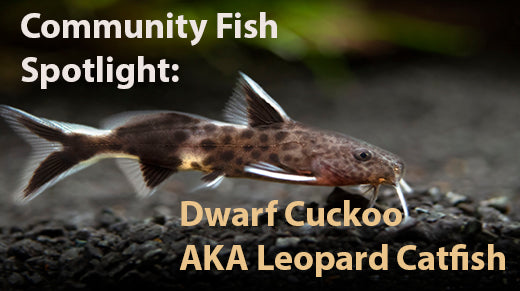
In the dynamic world of freshwater aquariums, few fish possess the mystique and charm of the Dwarf Cuckoo, also known as the Leopard Catfish (Synodontis petricola), especially when bred in captivity. This diminutive yet captivating species, native to the rocky shores of Lake Tanganyika in East Africa, has found its way into the hearts of aquarists worldwide. Renowned for its striking appearance and intriguing behaviors, the tank-bred Dwarf Cuckoo offers both educational insights and endless fascination.
Introduction: Discover the Enchantment of the Dwarf Cuckoo - Your Next Extraordinary Aquarium Companion
In the realm of freshwater aquariums, where vibrant colors and dynamic behaviors reign supreme, there exists a hidden gem waiting to be uncovered: the Dwarf Cuckoo, also known as the Leopard Catfish. Picture an aquatic marvel, adorned with intricate patterns reminiscent of a leopard's spots, gracefully navigating its way through the underwater landscape. This captivating species, native to the rocky shores of Lake Tanganyika in East Africa, holds within its diminutive frame a world of wonder and fascination, making it an exceptional choice for aquarists seeking an extraordinary pet. Join us as we embark on a journey into the enchanting realm of the Dwarf Cuckoo, where beauty, intelligence, and charm converge to create an unparalleled aquarium experience.
Physical Characteristics
The Dwarf Cuckoo, or Leopard Catfish, boasts a striking appearance characterized by its sleek, elongated body adorned with intricate patterns resembling the spots of a leopard. These markings serve as natural camouflage, allowing the fish to blend seamlessly into its rocky habitat while evading potential predators. With careful breeding in captivity, tank-bred specimens retain the vibrant colors and patterns of their wild counterparts, adding a touch of exotic beauty to any aquarium setting.
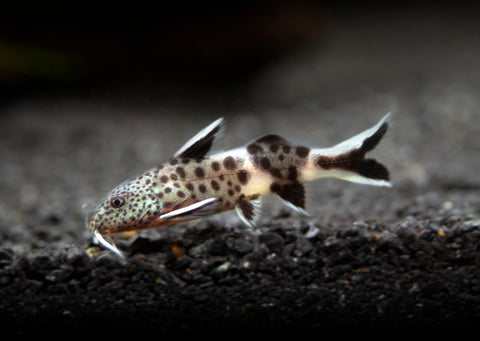
Mimetic Camouflage: The intricate patterns and coloration of Dwarf Cuckoo serve as effective camouflage, allowing them to blend seamlessly into their rocky habitat and evade predators. Their ability to mimic the appearance of their surroundings adds to their survival advantage in the wild.
Habitat and Behavior
Originating from the rocky shores of Lake Tanganyika in East Africa, the Dwarf Cuckoo is well adapted to its native environment. In the aquarium, these sociable fish exhibit a remarkable level of intelligence and curiosity, often engaging in playful antics and exploring every nook and cranny of their surroundings. They thrive in groups, preferring to shoal together in search of food and companionship. Providing ample hiding places such as caves, driftwood, and rocky formations mimics their natural habitat and offers security, allowing them to retreat when feeling threatened or in need of solitude.

Social Behavior: Dwarf Cuckoo are highly social creatures, often seen shoaling together in groups of their own kind. They exhibit complex social interactions and hierarchies within their shoals, making them fascinating subjects for observation in a community aquarium.
Tank Requirements and Care
Creating an optimal environment for Dwarf Cuckoo in your aquarium involves attention to detail and adherence to their specific requirements. Here's how to ensure their well-being:
Water Parameters:
Dwarf Cuckoo thrive in well-established tanks with stable water parameters. Aim for a pH range of 7.5 to 9.0 and maintain temperatures between 75°F to 82°F (24°C to 28°C). Consistency in these parameters is crucial for their health and vitality.
Filtration and Water Changes:
Adequate filtration is essential to maintain water quality. Invest in a quality filtration system to keep the water clean and free from toxins. Additionally, perform regular water changes to remove accumulated waste and replenish essential nutrients.
Substrate and Hiding Spots:
Provide a smooth substrate resembling the sandy bottom of their natural habitat. This substrate allows Dwarf Cuckoo to forage comfortably and reduces the risk of injury to their delicate barbels. Incorporate plenty of hiding spots such as caves, driftwood, and rocky formations to mimic their natural environment and alleviate stress.
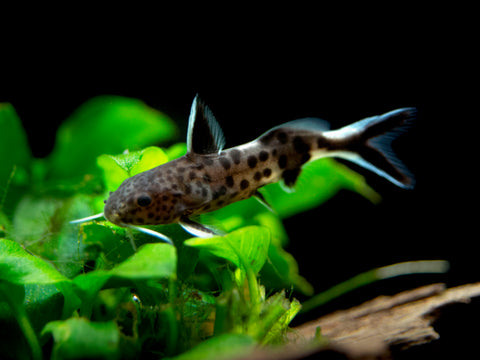
By meeting these tank requirements and care guidelines, you can create a thriving aquarium community that promotes the health and well-being of Dwarf Cuckoo while showcasing their natural beauty and behavior.
Feeding Requirements
Ensuring a well-balanced and nutritious diet is essential for the health and vitality of Dwarf Cuckoo in the aquarium. Here's what you need to know about their feeding requirements:
Omnivorous Diet:
Dwarf Cuckoo are omnivorous scavengers, meaning they consume a varied diet consisting of both animal and plant matter. In their natural habitat, they feed on small invertebrates, algae, and organic detritus found among the rocky substrate. In the aquarium, it's important to replicate this diverse diet to meet their nutritional needs adequately.
Commercial Foods:
High-quality sinking pellets or granules formulated specifically for bottom-dwelling fish are excellent staple foods for Dwarf Cuckoo. These pellets provide essential nutrients and vitamins necessary for their overall health and well-being. Choose pellets with a balanced nutritional profile and a size appropriate for their small mouths.
Frozen and Live Foods:
Supplementing their diet with frozen or live foods adds variety and mimics their natural feeding behaviors. Offer occasional treats such as bloodworms, brine shrimp, daphnia, and small crustaceans to provide enrichment and stimulate their hunting instincts. These live and frozen foods are rich in protein and essential fatty acids, contributing to their optimal growth and development.
Vegetable Matter:
Despite being primarily carnivorous, Dwarf Cuckoo also benefit from the inclusion of vegetable matter in their diet. Offer blanched vegetables such as zucchini, cucumber, and spinach to provide fiber and essential vitamins. Algae wafers or spirulina-based foods are also suitable options to supplement their diet with plant-based nutrients.
Feeding Frequency:
Feed Dwarf Cuckoo small amounts multiple times a day to mimic their natural feeding patterns and prevent overeating. Avoid overfeeding, as excess food can lead to water quality issues and digestive problems. Monitor their feeding behavior closely and adjust the feeding regimen accordingly based on their appetite and activity level.
By providing a varied and well-balanced diet consisting of commercial foods, frozen or live foods, and vegetable matter, you can ensure the health and vitality of Dwarf Cuckoo in the aquarium. Paying close attention to their feeding behavior and dietary preferences will help create a thriving and harmonious environment for these captivating bottom-dwelling fish.
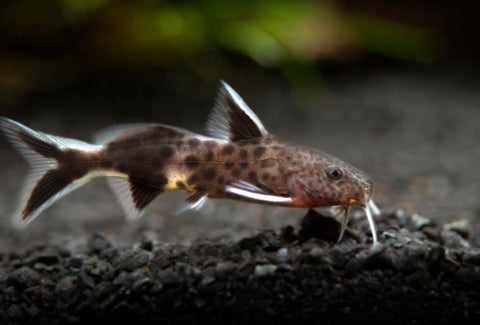
Nocturnal Feeding Habits: While Dwarf Cuckoo are primarily active during the day, they exhibit nocturnal feeding behaviors as well. Aquarists may observe them scavenging for food under the cover of darkness, utilizing their keen senses to locate prey and forage effectively.
Breeding and Reproduction
Breeding Dwarf Cuckoo in captivity can be achieved with the right conditions and proper care. To encourage spawning, provide a separate breeding tank with subdued lighting and ample hiding places. Females typically deposit their eggs on flat surfaces or within caves, which are diligently guarded by the male. After hatching, the fry can be raised on a diet of small live foods and commercial fry food until they reach maturity.
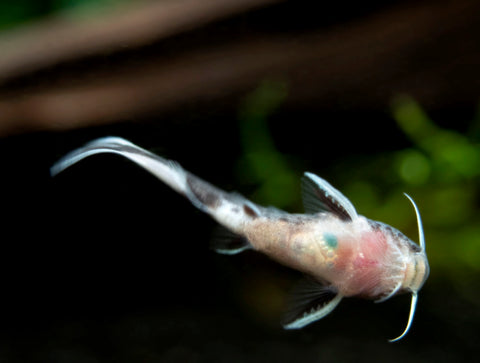
Breeding Challenges: Breeding Dwarf Cuckoo in captivity can be challenging due to their specific breeding requirements and the secretive nature of their spawning behaviors. Aquarists often employ dedicated breeding setups and meticulous attention to water parameters to encourage successful reproduction.
Interaction with Other Tankmates
Dwarf Cuckoo are generally peaceful and compatible with a variety of other freshwater fish species. However, it's essential to choose tankmates carefully to ensure compatibility and minimize aggression. Avoid housing them with aggressive or territorial species that may harass or outcompete them for food. Instead, opt for peaceful community fish such as tetras, rasboras, and small cichlids, which can coexist harmoniously with Dwarf Cuckoo in a well-planned aquarium community.
With their captivating appearance, engaging behavior, and ease of care, Dwarf Cuckoo are sure to become cherished additions to any freshwater aquarium community. Whether you're an experienced aquarist or a novice enthusiast, the allure of these fascinating fish is bound to captivate and inspire admiration for the natural world.
Q&A Section
Q: Can Dwarf Cuckoo live peacefully with small invertebrates like shrimp and snails?
A: Dwarf Cuckoo generally coexist peacefully with small invertebrates like shrimp and snails. They are not known to prey on these tankmates and often ignore them altogether. However, it's essential to provide sufficient hiding places and vegetation to ensure the invertebrates feel secure, especially during molting periods.Q: What fish do you not recommend to house with Dwarf Cuckoo?
A: While Dwarf Cuckoo are generally peaceful, there are certain fish species that may not be compatible due to differences in behavior or size. Avoid housing them with aggressive or territorial fish species that may harass or outcompete them for food. Additionally, large or fast-swimming species may intimidate Dwarf Cuckoo and disrupt their natural behavior.
Q: Is it safe to try to touch Dwarf Cuckoo with your hands?
A: It's not recommended to attempt to touch Dwarf Cuckoo with your hands. These fish have delicate barbels and sensitive skin, and handling them can cause stress and potential injury. It's best to observe and enjoy them from a distance, allowing them to thrive undisturbed in their aquatic environment.




